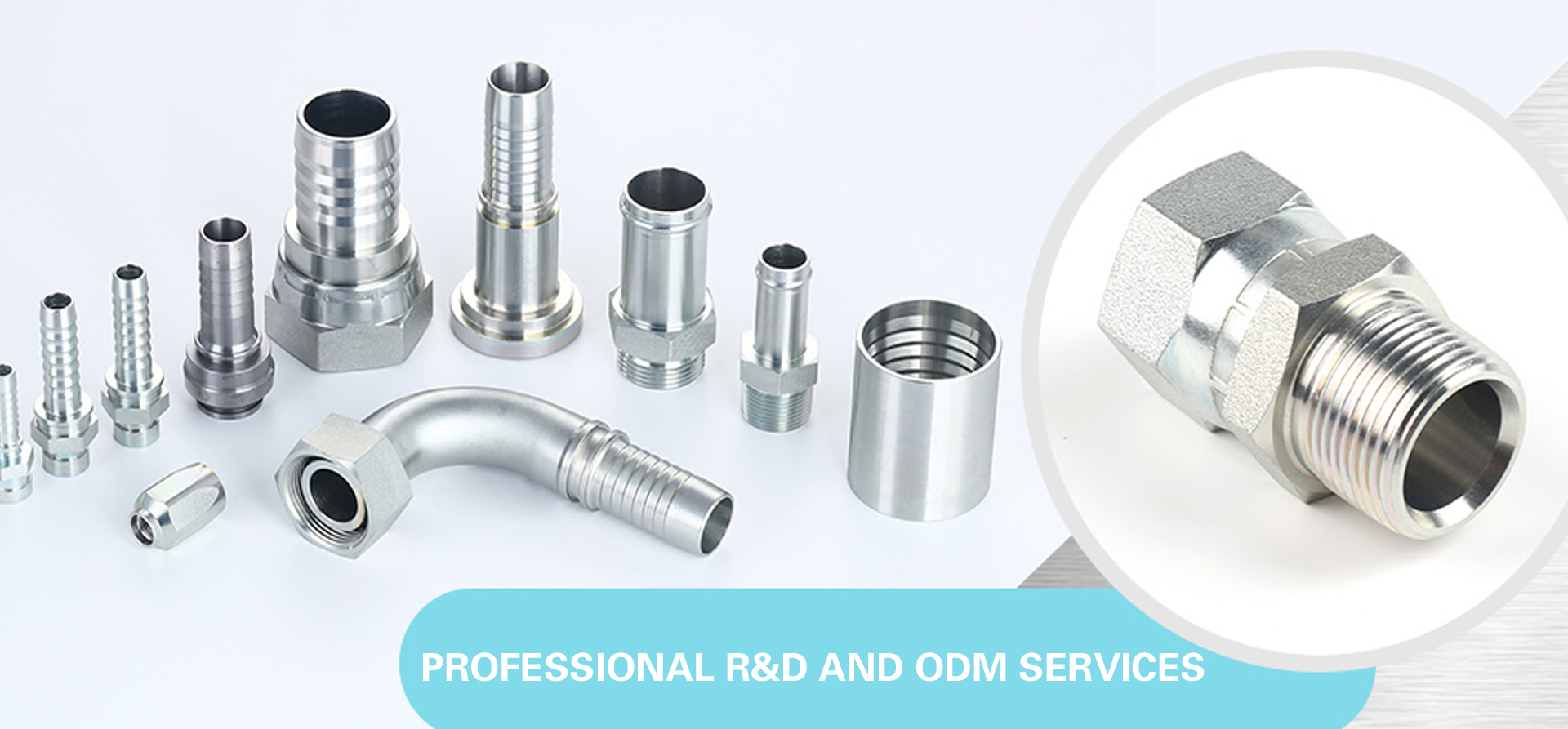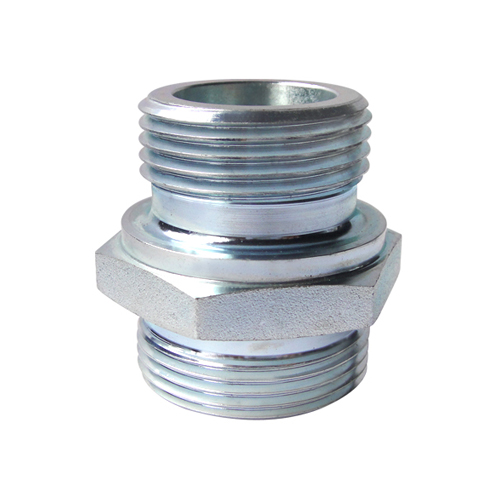Hydraulic systems are the backbone of various industries, from manufacturing and construction to aerospace and agriculture. One of the most critical components in these systems is the hydraulic elbow, a fitting that ensures smooth directional flow of hydraulic fluid. Proper installation of hydraulic elbows is essential to maintain system efficiency, prevent leaks, and avoid costly downtime. This comprehensive guide, brought to you by HI-TECH. INDUSTRY CO., LIMITED (referred to as Hoson), will walk you through the best practices, tools, and techniques for hydraulic elbow installation, while also diving into some industry insights to enhance your understanding of this crucial process.
Understanding Hydraulic Elbows
Hydraulic elbows are fittings used in hydraulic systems to change the direction of fluid flow. Typically available in 45-degree, 90-degree, and 180-degree angles, these components are vital for creating compact system designs and accommodating spatial constraints. The material of hydraulic elbows varies depending on the application, with common options including stainless steel, brass, and carbon steel. Selecting the right hydraulic elbow for your system involves considering factors like pressure ratings, temperature tolerance, and compatibility with hydraulic fluid.< p>At Hoson, we understand the importance of precision and reliability in hydraulic systems, which is why we provide high-quality hydraulic elbows designed to meet the rigorous demands of modern industries. Our products are manufactured to international standards, ensuring optimal performance and durability in even the most challenging environments.

Why Proper Installation Matters
Improper installation of hydraulic elbows can lead to a host of problems, including fluid leaks, pressure drops, and premature wear and tear. These issues not only compromise the efficiency of the hydraulic system but can also result in costly repairs and downtime. By following proper installation practices, you can:
Ensure a leak-free connection.
Maintain system pressure and efficiency.
Extend the lifespan of hydraulic components.
Reduce the risk of system failure and associated costs.
As a trusted name in the hydraulic industry, Hoson emphasizes the importance of proper installation techniques to maximize the performance and longevity of hydraulic systems. Our team of experts is always available to provide guidance and support to our clients worldwide.
Tools and Materials Required
Before starting the installation process, gather the necessary tools and materials to ensure a smooth and efficient workflow. Here’s a checklist of essential items:
Hydraulic elbow fittings (ensure the correct size and material).
Wrenches (adjustable and torque wrenches).
Pipe thread sealant or Teflon tape (if applicable).
Hydraulic hoses or pipes.
Cleaning supplies (rags, degreasers, etc.).
Safety equipment (gloves, goggles, etc.).
Using the right tools and materials is crucial for a successful installation. Hoson recommends investing in high-quality tools to ensure precision and avoid damaging the hydraulic components during the installation process.
Step-by-Step Guide to Hydraulic Elbow Installation
1. Prepare the Work Area
Start by cleaning the work area to remove any dirt, debris, or contaminants that could compromise the hydraulic system. Ensure that all tools and materials are within reach to minimize disruptions during the installation process.
2. Inspect the Components
Examine the hydraulic elbow fittings, hoses, and pipes for any signs of damage or defects. Check for cracks, dents, or irregularities that could affect the integrity of the connection. If you notice any issues, replace the damaged components before proceeding.
3. Apply Thread Sealant
If the hydraulic elbow has threaded connections, apply an appropriate thread sealant or Teflon tape to the threads. This step helps create a secure, leak-free connection. Be sure to follow the manufacturer’s recommendations for applying the sealant.
4. Connect the Fittings
Carefully align the hydraulic elbow with the hose or pipe and hand-tighten the connection. Avoid overtightening, as this can damage the threads or deform the fitting. Use a wrench to secure the connection, applying the recommended torque specified by the manufacturer.
5. Check for Proper Alignment
Ensure that the hydraulic elbow is properly aligned with the rest of the system. Misalignment can cause stress on the fittings and lead to leaks or system inefficiencies. Make any necessary adjustments before proceeding to the next step.
6. Test the System
Once the installation is complete, test the hydraulic system to check for leaks or pressure drops. Gradually increase the system pressure while monitoring the connections for any signs of leakage. If you detect any issues, tighten the connections or replace the affected components as needed.
7. Perform Routine Maintenance
After the installation, establish a routine maintenance schedule to inspect and maintain the hydraulic system. Regular maintenance helps identify potential issues early and ensures the long-term performance of the system.

Industry Insights: The Role of Hydraulic Elbows in Modern Systems
Hydraulic elbows play a pivotal role in optimizing the design and functionality of hydraulic systems. In industries like aerospace, where space constraints and weight limitations are critical, these fittings enable engineers to create compact yet efficient systems. Similarly, in the construction industry, hydraulic elbows are essential for heavy machinery that operates under high pressure and extreme conditions.
The demand for advanced hydraulic components, including elbows, has driven innovation in materials and manufacturing processes. For instance, the use of corrosion-resistant alloys and precision machining techniques has significantly improved the performance and reliability of hydraulic fittings. At Hoson, we stay at the forefront of these advancements, offering cutting-edge solutions that meet the evolving needs of our clients.
Common Mistakes to Avoid
Even experienced technicians can make mistakes during the installation of hydraulic elbows. Here are some common pitfalls to watch out for:
Using the wrong type or size of hydraulic elbow.
Overtightening or undertightening the fittings.
Failing to clean the components before installation.
Neglecting to test the system after installation.
Ignoring manufacturer guidelines and specifications.
By avoiding these mistakes, you can ensure a successful installation and maximize the efficiency of your hydraulic system. Hoson provides detailed product manuals and technical support to help you achieve the best results.
Conclusion
Installing hydraulic elbows may seem like a straightforward task, but it requires attention to detail, proper tools, and adherence to best practices. By following the steps outlined in this guide and leveraging the expertise of Hoson, you can ensure a reliable and efficient hydraulic system that meets the demands of your industry.
At Hoson, we are committed to delivering high-quality hydraulic components and exceptional customer service. Whether you need assistance with product selection, installation, or maintenance, our team is here to support you every step of the way. Contact us today to learn more about our products and services.
Remember, the performance of your hydraulic system depends on the quality of its components and the precision of its installation. Trust Hoson for all your hydraulic needs, and experience the difference that expertise and innovation can make.
With this comprehensive guide, you are now equipped with the knowledge and tools to install hydraulic elbows with confidence. Implement these best practices and take your hydraulic systems to the next level.



